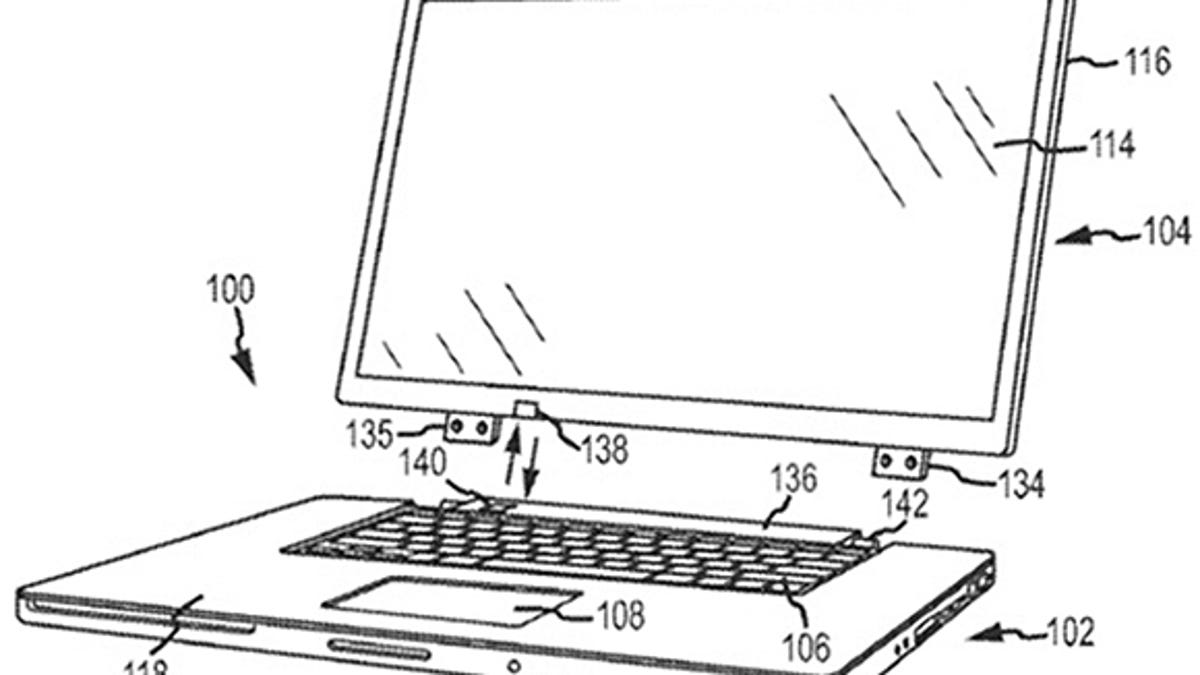Apple patent envisions wireless charging on convertible laptop
A patent application filed by the software giant describes a convertible MacBook-iPad hybrid that could be charged wirelessly.

Despite Apple CEO Tim Cook having knocked the idea of a convertible MacBook-iPad hybrid device, the company has filed a patent application for just that. The proposed patent, titled "Wireless display for electronic devices," was published by the U.S. Patent and Trademark Office today.
The application describes a computer display that is removable from its base -- basically a convertible laptop. But, what's different about this idea from other convertibles made by other companies is that it has wireless display technology. That means the device could be charged wirelessly.
Here's how Apple describes it in its patent application:
The base includes a processor, a base wireless chip, and a power source. The display includes a screen for displaying a video output, a display wireless chip in communicating with the base wireless chip, and a power wireless chip in communication with the power source. The base wireless chip transmits data from the processor to the display. Also, when the display is at least in one position with respect to the base, the power source transmits power to the power transition member of the display.
Convertible devices are nothing new, but they've never really caught on. Lenovo has its Yoga convertible, and Dell created its XPS 12, both of which run Microsoft Windows.
Last year, Cook mocked convertible devices saying that such convergence is a "compromise" to the end user.
"Anything can be forced to converge, but the problem is that products are about trade-offs, and you begin to make trade-offs to the point where what you have left doesn't please anyone," Cook said. "You can converge a toaster and a refrigerator, but those things are probably not going be pleasing to the user."
It's possible that Apple will never develop a consumer product based on this proposed patent, but it's also possible that the company may now be thinking it can do something beyond what Microsoft has done.
Apple has shown interest in wireless technology in the past. In 2011, it applied for a wireless charging patent that would let users charge an iOS device simply by keeping it close to their computer system. Then, last year, the company filed another patent application for wirelessly charging devices that would charge while sitting in boxes on store selves. Most recently, just last month, the U.S. Patent and Trademark Office published an Apple patent application that aims to charge iPads using a Smart Cover outfitted with charging technology.

